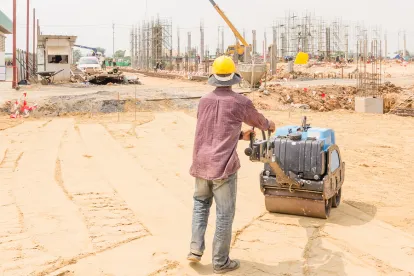In the context of construction litigation, it is always important to consider a potential claim for the spoliation of evidence regardless if you are the owner or general contractor seeking to backcharge a lower tier contractor, or the subcontractor against whom a backcharge is being sought.
The resolution of a spoliation of evidence motion could result in the dismissal of all claims related to backcharges sought by an upper tier contractor or owner. This could result in a judgment in favor of the lower tier contractor if appropriate precautions are not taken to prevent a claim for spoliation of evidence.
In general, spoliation of evidence involves a scenario where an upper tier contractor or owner has corrective or reparative work performed concerning work performed by a lower tier contractor before giving the lower tier an opportunity to review and inspect the allegedly defective work. The foundation for this claim is that neither the upper tier contractor nor owner can deny the lower tier contractor a right to review the work to determine if the work is defective, and, moreover, to determine the fair cost to correct or remediate the work.
In the context of construction litigation, if the owner or upper tier contractor failed to give the subcontractor an opportunity to inspect the work prior to remediation, any claim for backcharges related to the allegedly defective work could be dismissed by the Court. That is why it is essential to preserve evidence for review by the lower tier.
If an owner or upper tier contractor possesses a backcharge against a lower tier contractor for defective or incomplete work, this party must provide a full and fair opportunity for the lower tier contractor to review the work, and moreover, to witness the remediation of the work, if possible, in order to avoid any potential spoliation of evidence claims.
The generally accepted way to notify the lower tier contractor is by certified mail, return receipt requested, personal, or via email communications or letters which are confirmed receipt by the lower tier contractor. The key component is that the upper tier contractor or owner must make certain that the lower tier contractor has been given notice as to the defective condition or incomplete work.
Furthermore, the upper contractor or owner must give the lower tier contractor the opportunity to inspect the defective work or have an expert exam the defective work, and moreover, to observe the remediation process if possible. If these steps are taken, the lower tier contractor cannot assert that the evidence was spoiled, but instead, can only assert that the remedial work was not necessary.
In the context of the construction litigation, if the appropriate precautions are taken then the owner upper tier contractor will be able to assert this backcharge and the Court will consider this evidence. On the other hand, if a subcontractor has not been provided with the appropriate notice, the subcontractor could object to the introduction of such evidence at Trial and the owner or upper tier contractor may be foreclosed.
For these reasons, it is necessary that both sides pay close attention to potential spoliation of evidence claims in the context of construction litigation. While each side has different concerns as to whether or not the evidence is spoilated, both sides should be aware as to this general legal principal.



 />i
/>i

